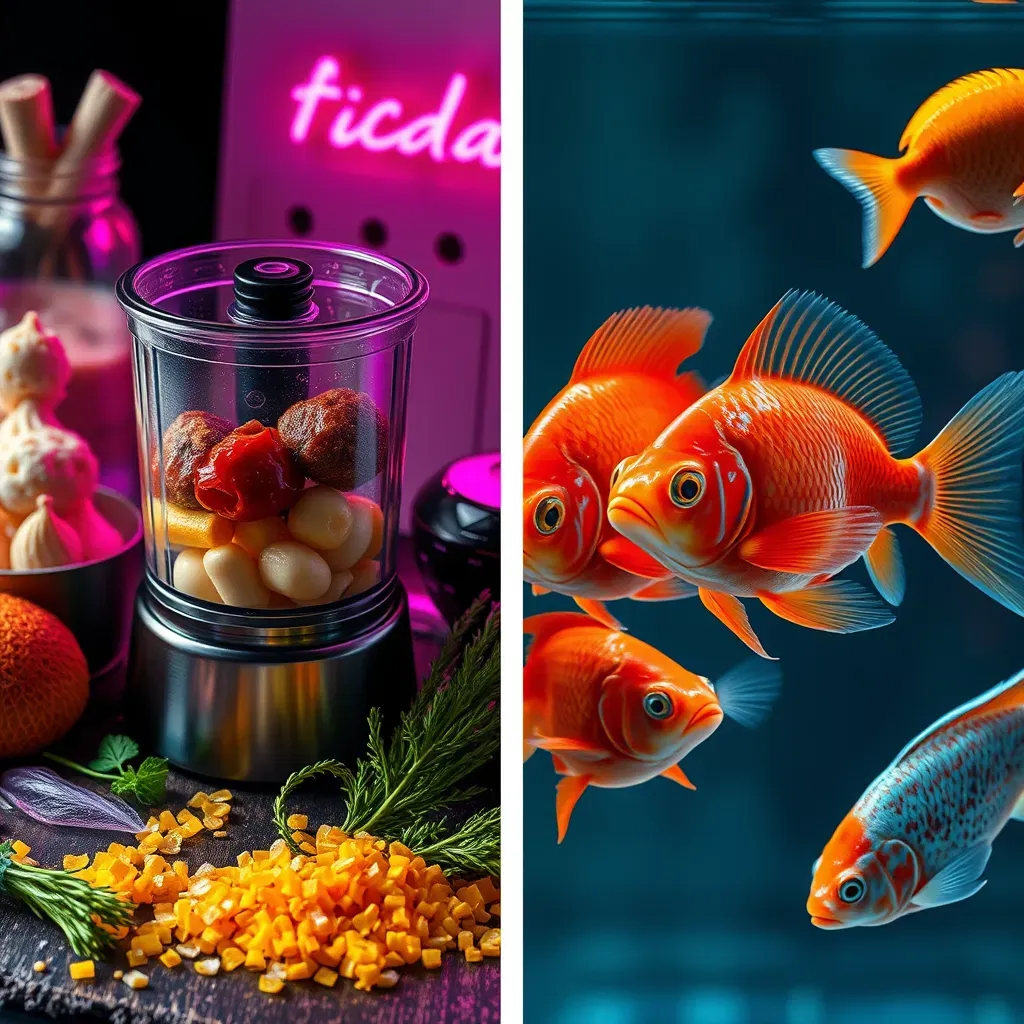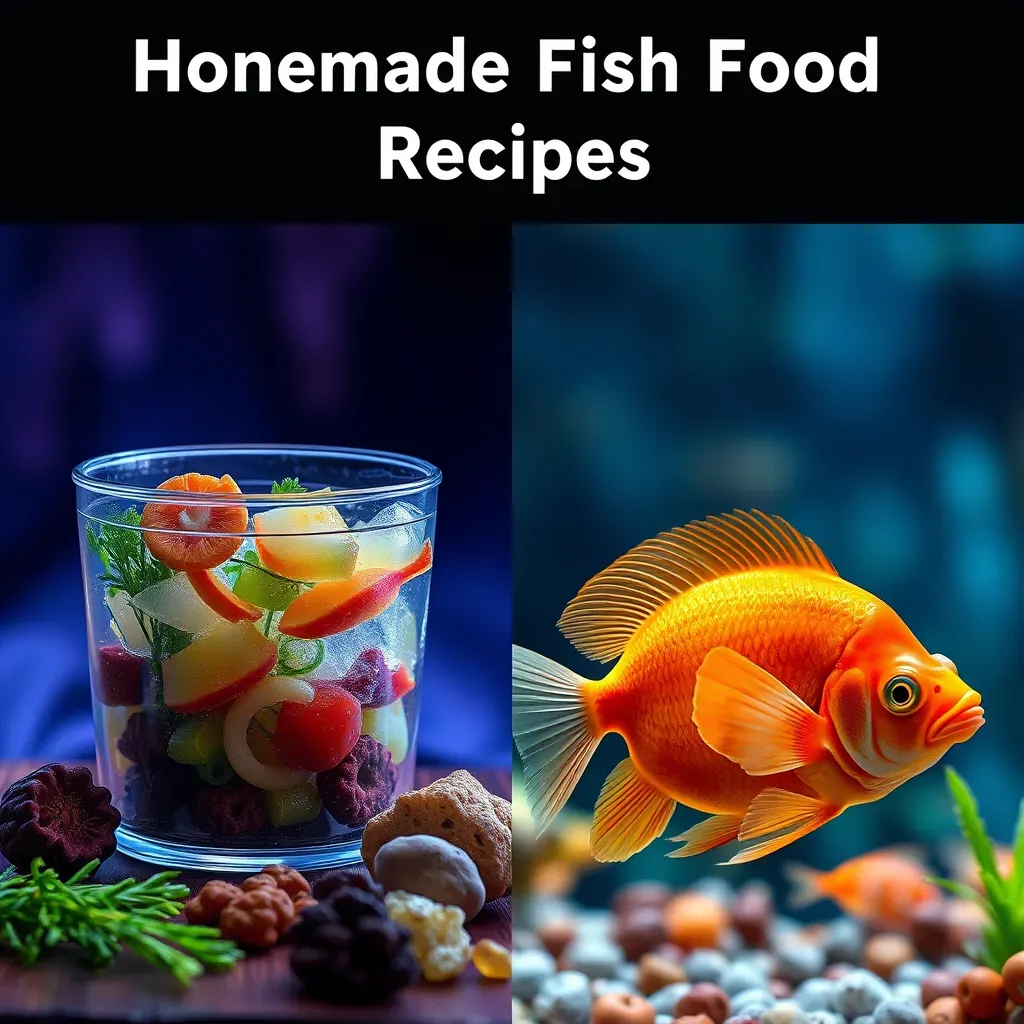Introduction
Creating your own fish food at home can be rewarding, cost-effective, and beneficial for your aquatic pets. Homemade fish food recipes offer unparalleled control over ingredients, freshness that store-bought options can’t match, and the satisfaction of providing personalized nutrition for your underwater friends.
However, there’s an important reality to acknowledge upfront: there’s no single “fish food recipe” that works for all aquatic pets. Different fish have vastly different nutritional needs based on their natural diets, size, and environment. What nourishes a betta might harm a goldfish, and what keeps cichlids thriving could be insufficient for guppies.
This comprehensive guide will help you understand fish nutritional requirements, find appropriate homemade fish food recipes for various fish types, and adapt them safely to meet your specific pets’ needs. Whether you’re feeding herbivores, carnivores, or omnivores, you’ll discover how to create nutritious homemade meals that promote health and vitality in your aquarium.
Why Make Your Own Fish Food? (Pros & Cons)

Benefits of Homemade Fish Food
- Complete ingredient control: You decide exactly what goes into your fish’s diet, avoiding fillers, preservatives, and artificial colorings found in some commercial foods
- Customization: Tailor recipes to address specific nutritional needs of your particular fish species
- Freshness: Provide nutrients without the degradation that occurs in long-shelf-life commercial products
- Cost-effectiveness: Potentially save money, especially when feeding multiple or large tanks
- Environmental impact: Reduce packaging waste from store-bought fish food containers
Potential Drawbacks
- Time commitment: Preparing homemade fish food takes more effort than scooping from a container
- Nutritional balance concerns: Without careful research, homemade diets might miss essential nutrients
- Storage limitations: Fresh foods spoil more quickly than commercial options
- Learning curve: Understanding specific fish needs requires research and observation
- Consistency challenges: Maintaining uniform nutritional content between batches
Understanding Fish Dietary Needs
Knowledge of fish nutrition fundamentals is crucial before attempting homemade fish food recipes. Fish fall into three primary dietary categories:
Herbivores
Herbivorous fish primarily consume plant matter and algae. They typically have:
- Lower protein requirements (20-30%)
- Higher carbohydrate needs
- Specialized digestive systems for processing plant material
- Examples: Plecos, some cichlids, mollies, silver dollars
Carnivores
Carnivorous fish eat primarily meat-based foods in nature. They generally require:
- Higher protein levels (45-55%)
- More essential amino acids
- Higher fat content
- Examples: Bettas, oscars, pufferfish, many cichlids
Omnivores
Omnivorous fish consume both plant and animal matter. They need:
- Moderate protein levels (35-45%)
- Balanced mix of plant and animal ingredients
- Examples: Goldfish, tetras, barbs, danios, guppies
Regardless of category, all fish require proper proteins, fats, vitamins, and minerals. The proportions and sources vary significantly between species, making research into your specific fish’s needs essential before creating homemade fish food recipes.
Categorizing Recipes (Addressing Variability)
Herbivore Fish Food Recipes
Herbivorous fish thrive on plant-based ingredients rich in fiber and moderate protein.
Basic Herbivore Gel Food Recipe
Ingredients:
- 1 cup mixed blanched vegetables (spinach, peas, zucchini)
- 1 tablespoon spirulina powder
- 1 teaspoon kelp powder (optional)
- 1 multivitamin drop formulated for fish
- 2 tablespoons gelatin or agar-agar
Preparation:
- Blanch vegetables until soft
- Blend vegetables into a fine paste
- Mix in spirulina, kelp powder, and vitamin
- Heat 1/2 cup water and dissolve gelatin/agar
- Combine with vegetable mixture and stir well
- Pour into ice cube trays and refrigerate until firm
- Cut into appropriate portions and freeze unused portions
Carnivore Fish Food Recipes
Carnivorous fish require protein-rich diets with appropriate fat content.
Basic Carnivore Gel Food Recipe
Ingredients:
- 1 cup seafood mix (raw shrimp, white fish fillet, small amount of squid)
- 1 tablespoon fish roe (optional)
- 1 teaspoon cod liver oil
- 1 multivitamin drop formulated for fish
- 2 tablespoons gelatin
Preparation:
- Thaw and rinse seafood thoroughly
- Blend ingredients into a fine paste
- Heat 1/2 cup water and dissolve gelatin
- Combine with seafood mixture and stir well
- Pour into ice cube trays and refrigerate until firm
- Cut into appropriate portions and freeze unused portions

Omnivore Fish Food Recipes
Omnivorous fish benefit from balanced plant and animal ingredients.
Basic Omnivore Gel Food Recipe
Ingredients:
- 1/2 cup seafood mix (shrimp, white fish)
- 1/2 cup blanched vegetables (peas, spinach, carrots)
- 1 teaspoon spirulina powder
- 1/2 teaspoon fish oil
- 1 multivitamin drop formulated for fish
- 2 tablespoons gelatin
Preparation:
- Blanch vegetables until soft
- Blend all ingredients into a fine paste
- Heat 1/2 cup water and dissolve gelatin
- Combine with blended mixture and stir well
- Pour into ice cube trays and refrigerate until firm
- Cut into appropriate portions and freeze unused portions
Common & Safe Ingredients
The foundation of successful homemade fish food recipes is using appropriate, nutritious ingredients. Here’s a guide to common ingredients and their benefits:
Protein Sources
- Shrimp – High in protein and naturally attractive to many fish
- White fish fillets – Clean protein source, low in thiaminase
- Salmon (cooked) – Rich in omega-3 fatty acids
- Bloodworms – Protein-rich, excellent for many carnivores
- Daphnia – Good micronutrient profile, suitable for smaller fish
Plant Sources
- Spirulina – Nutrient-dense algae, excellent protein and carotenoids
- Blanched spinach – Rich in vitamins and minerals
- Blanched peas – Good fiber source, helps with digestion
- Blanched zucchini – High water content, good for herbivores
- Seaweed/Nori – Contains iodine and other trace elements
Vitamin/Mineral Sources
- Fish multivitamins – Ensures complete nutrition
- Calcium supplements – Important for skeletal development
- Garlic (small amounts) – Natural antibacterial properties
Binders
- Gelatin – Animal-derived protein-based binder
- Agar-agar – Plant-based alternative to gelatin
- Unflavored Knox gelatin – Readily available in grocery stores
Ingredients to AVOID
Some ingredients can be harmful to fish and should be avoided in homemade fish food recipes:
- High-fat terrestrial meats (beef, pork) – Difficult for most fish to digest properly
- Bread or processed human foods – Cause water quality issues and lack proper nutrition
- Raw freshwater fish – May contain parasites that can infect aquarium fish
- Citrus fruits – Too acidic for most fish
- Excessive oils – Can cause fatty liver disease in many species
- Raw beans – Contain enzyme inhibitors harmful to fish
- Onions and garlic (large amounts) – Can cause anemia in fish when overused
- Table salt – Different from aquarium salt and potentially harmful
- Dairy products – Fish cannot digest lactose
- Processed foods with preservatives – Chemical additives can harm fish
Basic Preparation Techniques
Creating effective homemade fish food requires proper preparation techniques:
Chopping and Blending
- Fine processing is essential—most fish cannot chew large pieces
- Use a food processor or blender to create consistent textures
- For small fish, blend ingredients to a paste-like consistency
Cooking/Blanching
- Blanch vegetables to break down cell walls and improve digestibility
- Cook meat ingredients to kill potential pathogens
- Avoid overcooking, which can destroy nutrients
Mixing with Binders
- Gel food creation provides stability and prevents water fouling
- Proper ratio of ingredients to binder ensures food holds together
- Mix thoroughly to distribute nutrients evenly
Portioning and Storage
- Freeze immediately to preserve nutritional quality
- Use ice cube trays for convenient portions
- Label with dates and contents
- Store in airtight containers to prevent freezer burn

Important Safety & Feeding Tips
When making homemade fish food recipes, follow these critical guidelines:
- Start with small batches until you confirm your fish accept and thrive on the food
- Proper storage is essential—freeze unused portions immediately
- Always thaw portions before feeding—never microwave fish food
- Feed appropriate amounts—overfeeding causes water quality issues
- Observe your fish for signs of nutritional deficiencies or digestive problems
- Maintain variety in diet—even the best recipes shouldn’t be the only food offered
IMPORTANT DISCLAIMER: Always research your specific fish species’ nutritional needs. These homemade fish food recipes are starting points that should be adjusted based on your fish’s requirements. Consult reliable sources or experts if unsure about appropriate ingredients for your particular fish.
When Commercial Food Might Be Better
While homemade fish food offers many benefits, quality commercial foods have their place:
- Nutritional completeness – Premium commercial foods are scientifically formulated
- Convenience – Ready-to-use without preparation time
- Consistency – Uniform nutrition in every feeding
- Specialized formulations – Available for specific species and conditions
- Beginner-friendly – Lower risk of nutritional imbalances for new fish keepers
For sensitive or specialized species, commercial foods may be the safer option, particularly for beginners. Consider using homemade foods as supplements rather than complete replacements.
Conclusion & Next Steps
Creating homemade fish food recipes allows you to provide fresh, customized nutrition for your aquatic pets. The process requires understanding your fish’s specific dietary needs, selecting appropriate ingredients, and preparing food safely.
Start your homemade fish food journey with these steps:
- Research your specific fish species’ natural diet and nutritional requirements
- Begin with simple recipes appropriate for your fish’s dietary category
- Introduce homemade food gradually, monitoring for acceptance and health
- Adjust ingredients based on observation and research
- Maintain proper food storage and feeding practices
Remember that each fish species has unique needs—what works for one might not work for another. Be patient with the process and willing to adapt your approach based on your fish’s response.
Have you tried making homemade fish food before? Do you have questions about recipes for specific fish types? We’d love to hear your experiences and help with your homemade fish food journey!




